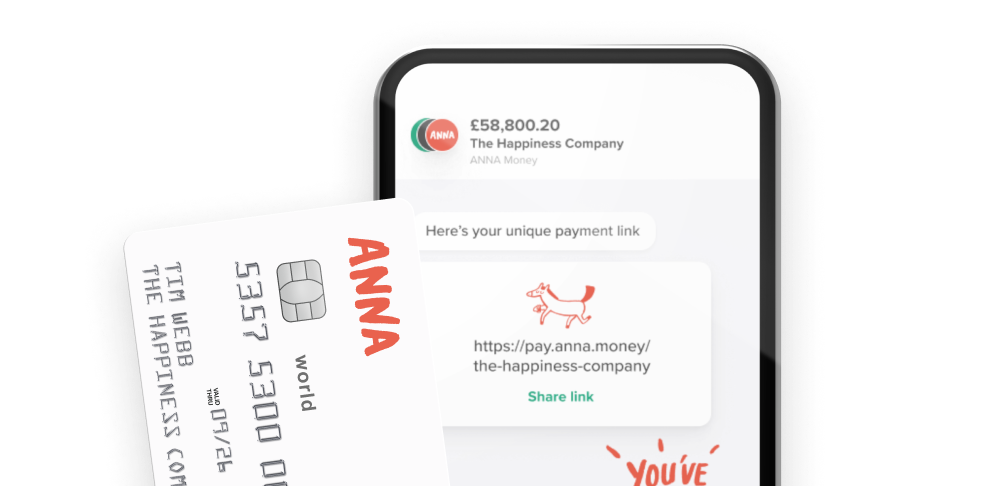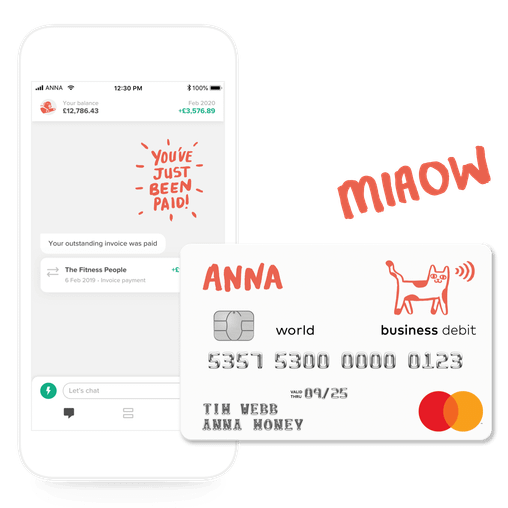What It Really Takes to Start a Restaurant in the UK Today [Full Guide]

Learn how to start a restaurant in the UK with clear steps on planning, costs, licences, marketing, and daily operations to grow your venture.


- In this article
- 1. Understanding the restaurant market
- 2. Legal requirements & company setup
- 3. Costs & finances
- 4. Client acquisition strategy
- 5. Operations & capabilities
- 6. Tools, systems & automations for starting a restaurant
- 7. Taxes, accounting & compliance
- Mastering
- Ready to start? Register your restaurant business today
The restaurant business is ideal for food lovers who also have an entrepreneurial streak. It suits those who want to build a brand, create memorable dining experiences, or simply turn their passion for cooking into a profitable venture.
But, before you serve your first plate, you’ll need to navigate regulations, understand costs, and plan every detail from location to menu. This guide breaks it down step by step so you know exactly how to start a restaurant in the UK and make it work.

1. Understanding the restaurant market
The UK restaurant industry is constantly evolving.
The UK restaurant/eating-out industry is forecast to be worth over £100 billion, with delivery and takeaway representing around £14.3 billion of the market and continuing to drive growth.
Consumers are increasingly value-focused, but they also seek unique experiences, for example, dining with a view, trying viral dishes, or supporting restaurants with sustainable practices.
🔸Key trends shaping the industry:
- Digital dining: Over 80% of transactions are now cashless, and 74% of restaurants use advanced ordering or service technologies.
- Ghost kitchens: Delivery-only brands are booming, reducing overhead costs while meeting online demand.
- Social media influence: Platforms like TikTok shape menus and attract younger audiences.
- Sustainability: Customers expect local sourcing, plant-based options, and waste reduction initiatives.
💡 Do you want to learn more about restaurant trends in 2026? Don’t skip! 👉 Low-Cost Restaurant Ideas in UK: Ghost Kitchens & TikTok Trends for 2026
🔸 Target customer segments:
- Urban diners seeking convenience and new food experiences.
- Families and professionals looking for affordable, reliable dining.
- Younger audiences influenced by trends and social media.
- Niche groups such as vegans, health-conscious eaters, or lovers of international cuisines.
📌 Fun fact: Viral food trends are so influential that some UK restaurants create “limited-time TikTok menus” just to attract buzz.

2. Legal requirements & company setup
Opening a restaurant means following strict rules to stay compliant. Here’s what you need to do:
✅ Choose your business structure
- Sole trader: Easy to set up but you’re personally liable for debts.
- Limited company: Offers liability protection, tax efficiency, and credibility with investors.
- Partnership: Suitable if you’re starting with someone else.
💡 Tip: Registering a limited company gives your restaurant its own legal identity. You can do this for free with ANNA and get a business account instantly.
✅ Register with authorities
Register your restaurant with the local authority at least 28 days before opening.
If handling meat, dairy, or fish, you may need additional approval following inspection.
✅ Licences you may need
- Premises licence: For selling alcohol, serving hot food late, or offering entertainment.
- Personal licence: At least one person needs this to oversee alcohol sales.
- Music licence: Required if you play copyrighted music.
- Street trading licence: For food trucks or stalls.
✅ Health & safety regulations
- Follow Food Standards Agency (FSA) guidelines.
- Implement a food safety management system (HACCP).
- Ensure proper fire safety, first aid, and accessibility measures.
✅ Insurance
You’ll need public liability, employer’s liability (if hiring staff), and contents insurance. Product liability is also recommended if you produce your own food products.
3. Costs & finances
Opening a restaurant isn’t cheap, but understanding the numbers helps you plan realistically.
🔸 Startup costs:
- Premises rent and deposit: £10,000–£50,000+ depending on location.
- Fit-out & equipment: £20,000–£200,000 (higher for large restaurants).
- Licences & permits: £500–£5,000.
- Initial stock: £2,000–£5,000.
- Marketing: £1,000–£5,000.
🔸 Operational costs per month:
- Rent & utilities: £8,000–£25,000.
- Staffing: £10,000–£30,000 depending on size.
- Ingredients & supplies: 25–35% of revenue.
🔸 Profit margins:
- Full-service restaurants typically aim for 5 – 10% net profit, while delivery-focused models can reach higher margins due to lower overhead.
4. Client acquisition strategy
Attracting customers is one of the hardest parts of running a restaurant, especially in a competitive market where diners have endless options. A solid acquisition plan blends local outreach, digital marketing, and partnerships to build visibility and loyalty from day one.
✅ Build local awareness
- Your first wave of customers often comes from the surrounding community. Make your restaurant visible and appealing to the people walking or driving past.
- Soft openings work wonders. Invite local journalists, influencers, and even nearby office workers to test your menu at a discounted rate. Their reviews and social posts can create early buzz.
- Distribute flyers or coupons in high-traffic areas. Partner with gyms, coffee shops, or coworking spaces nearby to display your menu.
- Join local food festivals or pop-up markets to showcase a signature dish and hand out business cards or promo codes for future visits.
✅ Maximise your online presence
In 2026, most diners discover restaurants online first, whether through Google, social media, or food delivery apps.
- Google My Business: Create and optimise your profile with photos, menu, hours, and links to book a table or order delivery.
- Social media marketing: Instagram and TikTok are crucial. Post high-quality photos, behind-the-scenes videos, and short recipe reels. Use local hashtags like #LondonFoodie or #ManchesterEats.
- Engage on delivery platforms: Partner with Uber Eats, Deliveroo, and Just Eat. Promote special offers for app users to boost visibility.
✅ Build trust and credibility
New restaurants must prove themselves to customers. That’s why you shouldn’t overlook the power of reviews and social proof.
- Encourage every happy diner to leave a Google or TripAdvisor review. Offer a small incentive like a free dessert on their next visit.
- Display your food hygiene rating visibly, because customers are reassured by top scores.
- Share testimonials, customer photos, and user-generated content on your website and social channels.
📌 Tip: Use QR codes on tables linking to your review page. It’s simple, and diners are more likely to leave feedback while they’re still at the restaurant.
5. Operations & capabilities
You will quickly realise that running a restaurant is a daily balancing act. It’s not just about cooking, as it is about creating seamless service, managing a team, handling suppliers, and making sure every customer leaves happy.
This is a cheat sheet of how to run a restaurant day by day:
🔸 Skills you’ll need
Successful restaurateurs combine culinary expertise with sharp business acumen.
- Culinary skills: Even if you’re not the head chef, you must understand food trends, menu pricing, and quality control.
- Leadership: Managing staff morale, scheduling shifts, and resolving conflicts are key to smooth service.
- Business management: You’ll need to handle budgeting, forecasting, and supplier negotiations.
- Customer service: Happy customers lead to repeat visits and positive reviews.
🔸 Daily operations
A typical day involves much more than serving meals.
- Morning prep: Stock checks, supplier deliveries, food prep, and equipment checks.
- Service: Coordinating kitchen staff, servers, and managing table turnover efficiently.
- Admin: Tracking expenses, responding to bookings, and updating inventory.
- Closing tasks: Cleaning, cashing out, and reviewing daily sales reports.
📌 Example: Many successful restaurants use a daily logbook to track issues (e.g., customer complaints, supplier delays) so they can address patterns quickly.
🔸 Staffing considerations
- Start lean: Hire only the essential team – head chef, kitchen assistants, a few servers, and a manager if needed.
- Training: Staff should be trained on allergen handling, upselling, and customer engagement.
- Scaling: As the business grows, consider adding bar staff, hosts, or marketing support.
6. Tools, systems & automations for starting a restaurant
Restaurants thrive when they streamline operations. Using the right tech saves time, cuts costs, and improves customer experiences.
🔸 Operational tools
- POS systems like Square or Lightspeed to manage sales, track inventory, and generate reports.
- Inventory management software to reduce waste and optimise stock orders.
- Booking platforms such as OpenTable or ResDiary to manage reservations.
🔸 Marketing & engagement tools
- Social media scheduling tools (Buffer, Hootsuite) to keep a consistent online presence.
- Email marketing (Mailchimp, Klaviyo) to send promotions and updates to customers.
- Customer loyalty apps to reward repeat visitors.
🔸 Finance & admin automation
Managing finances manually can be overwhelming, so try to automate wherever you can.
- Accounting software (Xero, QuickBooks) integrates with POS for real-time reports.
- ANNA’s business account goes a step further by automatching receipts, tracking expenses, and even chasing unpaid invoices.
Taxes+ from ANNA calculates VAT and Corporation Tax, filing them to HMRC on time, freeing you from endless spreadsheets.
7. Taxes, accounting & compliance
Taxes can be a headache if you’re not organised. As a restaurant owner, you must stay on top of multiple financial obligations to avoid penalties.
✅ Key tax responsibilities
- Sole traders file an annual Self Assessment with HMRC.
- Limited companies file Corporation Tax and annual accounts with Companies House.
- VAT registration is required once turnover hits £90,000 (or earlier if beneficial).
- Payroll (PAYE): Required if you employ staff, covering income tax and National Insurance.
✅ Bookkeeping best practices
- Keep personal and business finances separate.
- Save every receipt and invoice (digital copies work).
- Use software to automate categorisation and reporting.
- Review cash flow weekly to spot potential problems early.
📌 Pro tip: ANNA’s Bookkeeping score shows how well your records are kept and suggests improvements, which is perfect for staying HMRC-ready.
Mastering How to Start a Restaurant: Final Tips & Common Mistakes
Learning from others’ successes and failures can save you time and money when learning how to run a restaurant.
✅ Do this
- Focus on a clear concept and don’t try to please everyone.
- Keep menus short to control costs and speed up service.
- Invest in staff training; they are your brand ambassadors.
- Regularly monitor KPIs like table turnover, food cost %, and customer satisfaction.
❌ Avoid this
- Ignoring online reviews, ‘cause they can make or break your reputation.
- Overestimating demand and renting an oversized location.
- Skipping hygiene training leads to poor food safety ratings.
- Neglecting financial tracking makes many restaurants fail because they lose control of their cash flow.
Ready to start? Register your restaurant business today
Setting up a restaurant is a huge commitment, but with the right foundation, it’s entirely doable. From registration to taxes, you don’t need to handle every detail alone.
With ANNA, you can:
✅ Register your company for free.
✅ Open a business account instantly.
✅ Automate bookkeeping, invoicing, and tax filing.
✅ Get smart reminders for every HMRC deadline.
…and so much more!
Learn how to start your restaurant the smart way. Register with ANNA today and focus on serving great food while we handle the admin. 👇
Read the latest updates
You may also like
Open a business account in minutes




![How to Start a Currency Exchange Business in the UK [Guide]](https://storage.googleapis.com/anna-website-cms-prod/medium_Cover_3000_Landscaping_Business_Names_Creative_Name_Ideas_daad2f9e2a/medium_Cover_3000_Landscaping_Business_Names_Creative_Name_Ideas_daad2f9e2a.webp)




![140 Creative Tutoring Business Names [Ideas & Examples]](https://storage.googleapis.com/anna-website-cms-prod/medium_Cover_3000_Landscaping_Business_Names_Creative_Name_Ideas_d7964059b3/medium_Cover_3000_Landscaping_Business_Names_Creative_Name_Ideas_d7964059b3.webp)

![How to Start a Self-Employed Business in the UK [Guide]](https://storage.googleapis.com/anna-website-cms-prod/medium_Cover_3000_Landscaping_Business_Names_Creative_Name_Ideas_fe5b6edef1/medium_Cover_3000_Landscaping_Business_Names_Creative_Name_Ideas_fe5b6edef1.webp)


![How to Start an Event Planning Business [Full UK Guide]](https://storage.googleapis.com/anna-website-cms-prod/medium_Cover_3000_How_to_Start_an_Event_Planning_Business_in_the_UK_9e78d91fa0/medium_Cover_3000_How_to_Start_an_Event_Planning_Business_in_the_UK_9e78d91fa0.webp)
![How to Start a Hoodie Business in 2026 [Full Guide]](https://storage.googleapis.com/anna-website-cms-prod/medium_Cover_3000_How_to_Start_a_Hoodie_Business_in_2025_Guide_17060b578d/medium_Cover_3000_How_to_Start_a_Hoodie_Business_in_2025_Guide_17060b578d.webp)
![How to Start a Bakery Business in the UK [2026 Guide]](https://storage.googleapis.com/anna-website-cms-prod/medium_Cover_3000_How_to_Start_a_Copywriting_Business_from_Scratch_e47ea6b2a6/medium_Cover_3000_How_to_Start_a_Copywriting_Business_from_Scratch_e47ea6b2a6.webp)
![How to Start a Coffee Shop in the UK? [Comprehensive Guide]](https://storage.googleapis.com/anna-website-cms-prod/medium_cover_3000_fd0122954d/medium_cover_3000_fd0122954d.webp)
![How to Start a Graphic Design Business in 2026 [Full Guide]](https://storage.googleapis.com/anna-website-cms-prod/medium_Cover_3000_How_to_Start_a_Graphic_Design_Business_in_2025_d8d412cdf5/medium_Cover_3000_How_to_Start_a_Graphic_Design_Business_in_2025_d8d412cdf5.webp)
![How to Start a Video Editing Business in 2026 [Full Guide]](https://storage.googleapis.com/anna-website-cms-prod/medium_Cover_3000_How_to_Start_a_Video_Editing_Business_in_2025_bf1c6865ee/medium_Cover_3000_How_to_Start_a_Video_Editing_Business_in_2025_bf1c6865ee.webp)


![7 Tips to Start a Perfume Business [Step-by-step Guide]](https://storage.googleapis.com/anna-website-cms-prod/medium_cover_3000_d39376141d/medium_cover_3000_d39376141d.webp)


![How to Start a Coffee Van Business in the UK [Step-by-Step]](https://storage.googleapis.com/anna-website-cms-prod/medium_Cover_3000_How_to_Start_a_Copywriting_Business_from_Scratch_87e1d9b2a3/medium_Cover_3000_How_to_Start_a_Copywriting_Business_from_Scratch_87e1d9b2a3.webp)